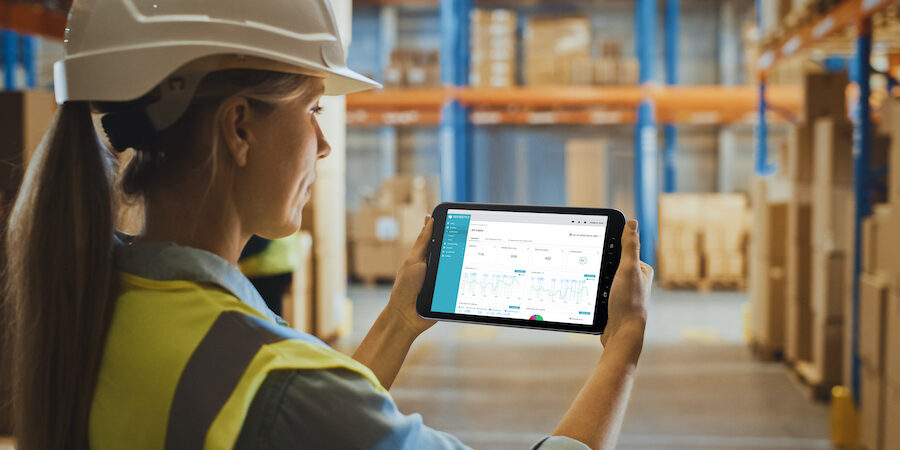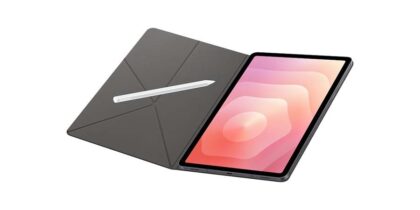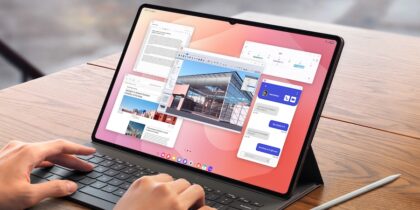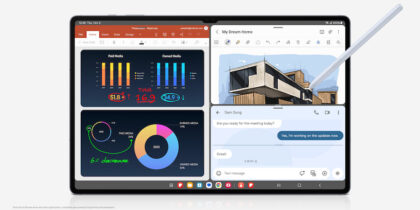Even in today’s mobile-first era, many frontline workers still rely on breakroom bulletin boards, printed flyers and word of mouth to get important information. Without an easy way of providing feedback — or even a corporate email address — these essential workers are often left out of company-wide conversations. And the closest they get to mobile technology is a handful of shared barcode scanners or two-way radios that are checked out at the start and end of each shift.
Beekeeper and Samsung are partnering together to tackle this frontline worker disconnect. A mobile collaboration platform designed specifically for frontline workers, Beekeeper connects employees across different shifts and locations, in multiple languages. With over 750 possible cloud integrations, the platform also lets your company sync its existing enterprise systems and data.
When Beekeeper is deployed on Samsung rugged mobile devices, it becomes a single intuitive employee portal to access everything they need. Devices and user profiles are automatically customized by role, so workers can log into all their apps with a single sign-on, and companies can deploy hundreds or thousands of devices without overtaxing their IT resources.
So how does the Beekeeper solution work? How does it help companies of all sizes streamline their frontline operations, boost productivity and improve employee engagement? And how can it be optimized with Samsung Knox security?
How Beekeeper works
At its core, Beekeeper is an easy-to-use communication platform, but with the right integrations, it grows to an all-in-one productivity tool for frontline workers.
Adrienne Cummings, channel partner manager for Beekeeper, describes the platform like a wheel: “Beekeeper is the employee communication hub that sits in the middle, and we provide spokes out to those investments that companies have already made in payroll systems, learning management systems, workforce management solutions and other enterprise technology.”
Beekeeper’s native communication tools support “three layers of collaboration,” says Simon Mutlu, Beekeeper Vice President North America. There’s an announcement layer, which lets an employer alert their entire workforce to time-sensitive information such as new safety protocols, open enrollment periods and emergency facilities closures. Secondly, there’s a feedback layer with digital forms, surveys and polls that employers can use to solicit real-time feedback from the front line. And there’s a collaboration layer, which lets individuals and groups communicate with each other. Across all three layers, messages are translated into the user’s preferred language.
The user experience is intuitive for most people, because it works like a social media platform. Employees can create a post with photos, videos or documents and share it with their team, location or the entire workforce. Then their co-workers can like or comment to join the conversation. The platform also includes chatting functionality that lets you send text- or voice-based messages to individual co-workers, groups and even chatbots. Beekeeper also integrates with third-party apps such as Slack or Microsoft Teams enabling features such as voice or video calls.
Beekeeper’s benefits
What are the advantages of using Beekeeper to connect frontline workers?
Clear, relevant communication
Messages from corporate leaders and internal communication teams can get lost in translation as they go from district managers to site managers to employees. Beekeeper cuts through the clutter so frontline workers can comment and provide feedback in near-real time. Integrations with payroll and headcount management systems further streamline frontline communication, allowing companies to target their messages toward relevant groups, roles and locations. In a survey of frontline workers at FRHI Hotels & Resorts, 88 percent said they feel more informed about what’s happening at the company because of Beekeeper.
Productivity boost
Half of all frontline workers waste about three hours a week looking for information they need to do their jobs. Beekeeper puts all the information they need — training manuals, documents, instructions and more — right at their fingertips. They don’t have to track down a manager for instructions about what to do next. And if Beekeeper is integrated with a task management or workforce management solution, they can see their next assignment. That’s why 91 percent of FRHI Hotels & Resorts employees believe it helps them perform better in their jobs.
Employee engagement
Beekeeper improves frontline engagement by making workers part of company conversations, fostering a sense of belonging, and ensuring they have the information they need. Marriott Oakland, for example, saw 23 percent improvement on its annual employee engagement survey after deploying the Beekeeper solution. That kind of improvement translates to bottom-line results, as shown by 20-plus years’ worth of Gallup research. Engaged workforces experience 41 percent less absenteeism, 17 percent more productivity, 20 percent less turnover and 21 percent greater profitability.
What's the best tablet for your business?
Take this quick assessment to see which Samsung tablet would best support your business needs. Download Now
Employee retention and recruitment
Even in the best of times, annual frontline turnover is nearly 100 percent in some industries. In the wake of the pandemic, many companies are struggling to find enough workers. Beekeeper can reduce turnover by 20 to 39 percent and improve recruitment efforts by driving more employee referrals.
Cost savings
Streamlining communication and digitizing forms doesn’t just save workers time; it also saves the company money. McKinsey found that digitizing information-intensive processes could cut business costs by up to 90 percent. Cement manufacturer Holcim saved $50,000 per year when it stopped printing an employee magazine and started using Beekeeper.
“Deploying rugged mobile device with applications like Beekeeper can help organizations reduce costs in multiple areas,” explains Kevin Eaton, who leads business development for Samsung in the manufacturing industry. “Not only does it help reduce printing costs, but rugged devices can also replace other legacy technology like radios and dedicated barcode scanners. Fewer devices to manage also means more time to spend on other process innovation projects.”
A rugged smartphone or tablet in every hand
Beekeeper’s mobile app can be downloaded on any mobile device, but expecting employees to use their personal smartphones can hamper adoption.
“Not every worker has a smartphone, and for a truly connected frontline, every worker needs a device,” explains Mutlu. “Some employees’ smartphones might not have the capabilities needed to optimally run business apps, and many people are reluctant to use their personal devices at work. Plus, in sterile environments like food manufacturing, there’s a safety concern if people are bringing outside devices onto the factory floor.”
That’s one reason Beekeeper has partnered with Samsung to help companies deploy quickly on standardized, highly customizable devices. Cummings also attributes the partnership to Samsung’s investment in rugged smartphone and tablet technology. “For most of our customers, over 60 percent of their workforce is frontline workers, so they need devices that can sustain being in an industrial or high-traffic environment. It’s a natural fit.”
Mutlu says Samsung Knox is an added advantage: “Workers are often sharing these devices across shifts, and Samsung Knox lets them switch back and forth between user profiles with single sign-on. Once someone is authenticated into Knox, all the apps, accounts and communications on that user’s profile are suddenly available.”
And thanks to Beekeeper, frontline workers are suddenly part of the conversation, with all the information and tools they need right in the palm of their hand. Not only does this empower workers to perform better at work, it also empowers their employers to perform better in the marketplace.
“Leading companies, across industries, generally have a focus and budget and roles around digital transformation, and many of their competitors don’t,” says Mutlu. “The innovators who are raising their hands for solutions like Beekeeper are running away with things, because they realize that collaboration is a competitive advantage.”
As you’re planning your next mobile productivity upgrade, find the right smartphone for your business needs with this free, quick assessment. And discover how Samsung’s rugged mobile technology can keep you prepared for the unpredictable.









